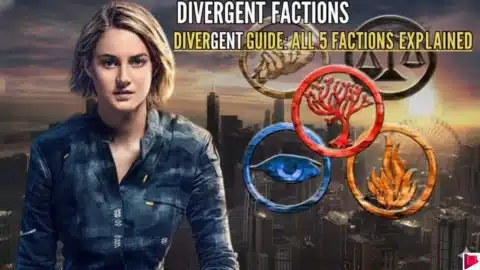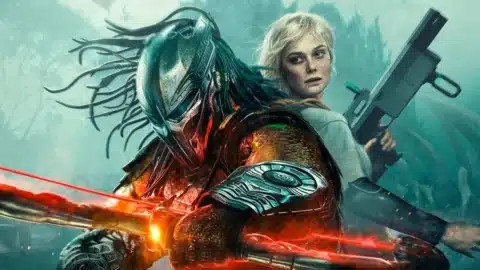For years, the Predator universe struggled to find a consistent identity. Some films flirted with reinventing the Yautja mythos, while others leaned on nostalgia or spectacle without adding anything new. But with Prey and now Predator: Badlands, Dan Trachtenberg has shifted the conversation entirely. Instead of relying on loud set pieces or familiar tropes, he has introduced a style built on emotional clarity, tight storytelling and character-first tension.
That approach becomes even more obvious when people search for Predator Badlands ending explained or revisit the film’s final moments. The story doesn’t end with a simple victory; it lands with weight because every choice, every shot and every emotional beat has been engineered with intention. Trachtenberg isn’t just directing Predator movies; he’s reshaping how the franchise tells stories.
Below is a complete breakdown of what makes Badlands stand out, how Trachtenberg’s filmmaking keeps working so well, and the deeper meaning behind the ending that has been trending everywhere since its release.
Read Also: Tracker Season 3: Cast, Plot, Release Date, and Everything We Know
Trachtenberg’s Filmmaking Style: The Secret Behind the Franchise Revival
What separates Trachtenberg from past Predator directors is his willingness to slow down the noise and focus on why the hunt matters. His films don’t treat the Predator as a jump-scare generator. They treat the Predator as a presence that reshapes the world around every character.
1. Character-Driven Survival Instead of Mindless Action
In Badlands, Dek and Thia aren’t just running from a monster. They are trying to redefine who they are. Dek, the exiled Yautja outcast, is searching for honor on his own terms. Thia is an android discovering something close to humanity. Trachtenberg always anchors action to purpose, so the violence hits harder because something emotional is at stake.
2. Real Stakes Created Through Silence, Tension and Space
He uses wide framing, long pauses and environmental storytelling to make the world feel dangerous before the Predator even appears. It’s not about jump scares; it’s about dread.
3. Endings That Complete Arcs, Not Just Scenes
Fans keep praising Trachtenberg because his endings, whether in Prey or Badlands, always tie back to character transformation. You’re not just watching a final fight; you’re watching the moment everything clicks.
How Predator: Badlands Uses These Techniques Better Than Ever
Badlands is arguably Trachtenberg’s most refined Predator story yet. The film operates like a survival western in space, with dusty horizons, unpredictable terrain and the constant feeling that the environment wants both Dek and Thia dead.
Here’s how his style elevates the film:
- The camera lingers on Dek’s hesitation, pride and frustration, letting us feel the internal conflict of a Predator trying to prove himself.
- Thia’s quiet moments are filled with micro-gestures that suggest learning, fear and kindness, not bad for a being that isn’t supposed to feel anything.
- The apex creature isn’t over-explained. Trachtenberg trusts audiences to figure it out through scars, behavior and environmental clues.
That blend of restraint and precision is what makes viewers look up Predator Badlands themes and Predator Badlands analysis after leaving the theater.
Predator Badlands Ending Explained: What the Final Hunt Really Means
The ending works because it closes Dek’s emotional arc, not just the physical conflict.
After surviving the Badlands and facing the apex predator, Dek proves that he doesn’t need his former clan’s approval to define himself. The brutal final battle isn’t about glory; it’s about identity. Trachtenberg positions Dek as a rare type of Predator, one willing to forge his own path instead of following rigid tradition.
When Dek defeats the apex creature, it’s symbolic:
- He has conquered the one thing no clan member ever could.
- He has earned a warrior’s honor without becoming cruel or hollow.
- He has learned teamwork from a companion he was never meant to care about.
It’s the first time a Predator protagonist has been portrayed this way, and that’s why the ending lands with such force.
The Meaning Behind the Pre-Credits Sequence
The short pre-credits moment has sparked massive search interest for the Predator Badlands final scene and Predator Badlands sequel discussions.
Dek returns to Yautja space to confront his former clan and the father who exiled him. Fighting isn’t portrayed as glory; it’s portrayed as closure. Dek wins, not because he’s the strongest, but because he has learned adaptability and emotional intelligence, things his clan sees as weaknesses.
The moment Thia asks whether the arriving ship is friend or foe, and Dek reveals it belongs to his mother, cements the point:
His story is far from over.
It’s not just a setup for a sequel; it’s a doorway into Yautja political and family dynamics that the franchise has never explored in depth.
Hidden Details Viewers Missed
Trachtenberg loads the finale with subtle storytelling choices:
1. The Apex Predator Mirrors Dek
Both are outcasts, one exiled, one born malformed. Their fight is symbolic, not accidental.
2. Thia’s Final Expression Hints at Self-Awareness
Her reaction during the ending suggests she has evolved beyond her programming.
3. Dek’s New Cloak Represents Personal Identity
It’s not just a trophy; it’s a rejection of clan uniformity.
4. The Mother’s Ship Suggests a New Faction
Her arrival implies a split in Yautja society, creating fertile ground for future films.
These layers are why fans want Predator Badlands meaning breakdowns. The film rewards slow, thoughtful viewing.
How Badlands Reinvents the Franchise’s Future
The most important achievement of Badlands is how it reframes Predator storytelling.
1. The Predator Is Now a True Protagonist
This shift opens the door for character-focused Yautja films.
2. The Universe Can Explore Yautja Society
Clan politics, culture, family structure and honor systems are now viable narrative pathways.
3. Emotional Storytelling Works for This Franchise
The ending proves a Predator movie can make you feel something besides fear.
4. A Trilogy Is Now Possible
With clear world-building foundations, Badlands can easily expand into a multi-film arc.
Will There Be a Predator Badlands Sequel?
There has been no official confirmation yet, but several factors point toward a strong possibility:
- The emotional cliffhanger
- Rising search trends for Predator Badlands sequel
- High audience engagement
- Strong positive reactions to Dek and Thia
- A universe that feels newly expandable
Studios don’t ignore momentum like this.
Final Thoughts
Predator: Badlands is more than a new entry; it’s a signal that the franchise has finally found its voice again. Dan Trachtenberg has proven, twice now, that Predator stories thrive when grounded in intimate character work, thoughtful filmmaking and endings that actually mean something.
The searches for Predator Badlands ending explained aren’t just curiosity. They reflect a deeper truth: people care again. And that alone proves Badlands is not just a successful film, but a turning point for the entire franchise.
Frequently Asked Questions
1. Why is Predator: Badlands trending so much after release?
Because of its emotional ending, character focus, and cliffhanger, it has sparked huge fan discussions, along with interest in a possible sequel.
2. Is the ending of Predator: Badlands connected to Prey?
Not directly, but the themes and character-driven approach share Trachtenberg’s trademark storytelling style.
3. What does the final ship at the end represent?
It belongs to Dek’s mother, hinting at deeper Yautja family and political dynamics the franchise may explore in future films.
4. Is Predator: Badlands setting up a trilogy?
The ending strongly suggests a multi-film arc, though no official announcement has been made.
5. Why do fans say Trachtenberg “saved” the Predator franchise?
Because his films combine tension, emotional clarity and meaningful endings, something missing from many recent attempts.




